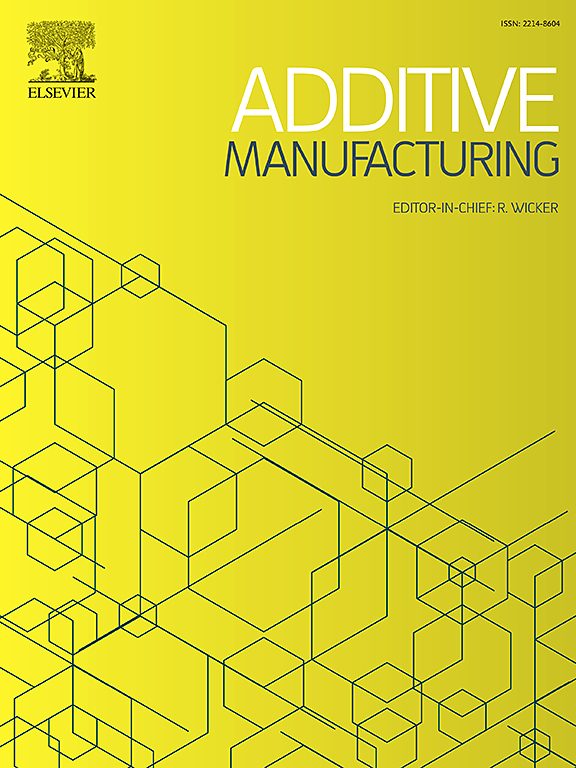Fabricable stochastic periodic porous microstructures: A Wang cube and Gaussian kernel approach
IF 10.3
1区 工程技术
Q1 ENGINEERING, MANUFACTURING
引用次数: 0
Abstract
Stochastic porous structures, characterized by randomly distributed voids within solid materials, are prevalent in natural systems such as geological formations, biological tissues, and ecosystems. These structures play crucial roles in processes like nutrient transport and water retention, making them a key focus of interdisciplinary research. Traditional design methods for stochastic porous structures often require detailed modeling of the entire structure, leading to high computational costs. To alleviate this, periodic microstructures are commonly used to fill target regions with repetitive units. However, generating large-scale stochastic porous structures that combine smooth connectivity with global randomness using periodic units remains a significant challenge. This paper presents a novel approach for generating periodic stochastic porous microstructures based on Wang tile rules. The proposed method employs a parameterized generative model with a dual-layer structure, incorporating 27 types of periodic periphery configurations and internal pore-tunnel structures formed from randomly distributed Gaussian kernels. This design balances stochasticity with boundary constraints. Simulations and experiments validate the proposed approach, showing that the resulting stochastic porous microstructures exhibit distinct deformation patterns and superior energy absorption compared to periodic microstructures.
可制造的随机周期性多孔微结构:王立方和高斯核方法
随机多孔结构以固体材料内部随机分布的空隙为特征,普遍存在于地质构造、生物组织和生态系统等自然系统中。这些结构在营养物质运输和水分保持等过程中起着至关重要的作用,使它们成为跨学科研究的重点。传统的随机多孔结构设计方法往往需要对整个结构进行详细的建模,计算成本很高。为了缓解这种情况,周期性微观结构通常用于用重复单元填充目标区域。然而,使用周期单元生成结合光滑连通性和全局随机性的大规模随机多孔结构仍然是一个重大挑战。本文提出了一种基于王瓦规则生成周期性随机多孔微结构的新方法。该方法采用双层结构的参数化生成模型,包含27种周期性外围结构和由随机分布的高斯核形成的内部孔-隧道结构。这种设计平衡了随机性和边界约束。仿真和实验验证了所提出的方法,结果表明,与周期性微观结构相比,所得到的随机多孔微观结构具有明显的变形模式和更好的能量吸收。
本文章由计算机程序翻译,如有差异,请以英文原文为准。
求助全文
约1分钟内获得全文
求助全文
来源期刊

Additive manufacturing
Materials Science-General Materials Science
CiteScore
19.80
自引率
12.70%
发文量
648
审稿时长
35 days
期刊介绍:
Additive Manufacturing stands as a peer-reviewed journal dedicated to delivering high-quality research papers and reviews in the field of additive manufacturing, serving both academia and industry leaders. The journal's objective is to recognize the innovative essence of additive manufacturing and its diverse applications, providing a comprehensive overview of current developments and future prospects.
The transformative potential of additive manufacturing technologies in product design and manufacturing is poised to disrupt traditional approaches. In response to this paradigm shift, a distinctive and comprehensive publication outlet was essential. Additive Manufacturing fulfills this need, offering a platform for engineers, materials scientists, and practitioners across academia and various industries to document and share innovations in these evolving technologies.
 求助内容:
求助内容: 应助结果提醒方式:
应助结果提醒方式:


